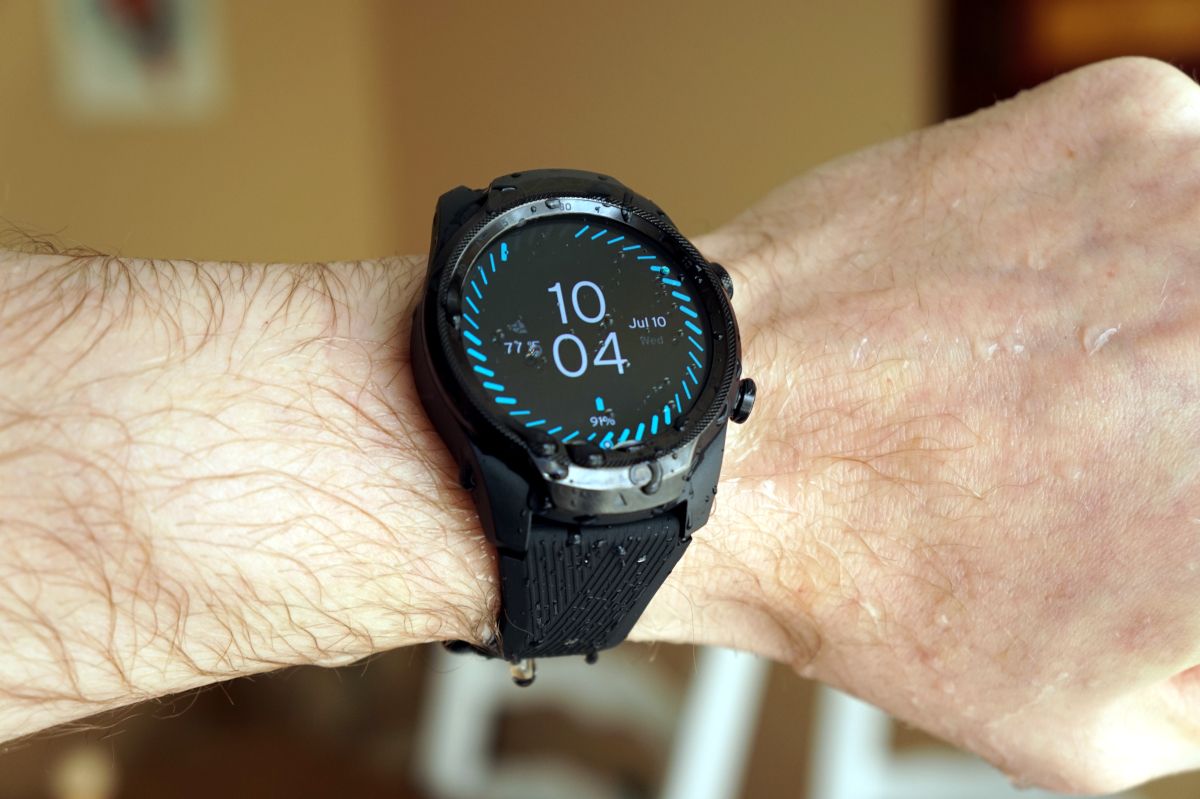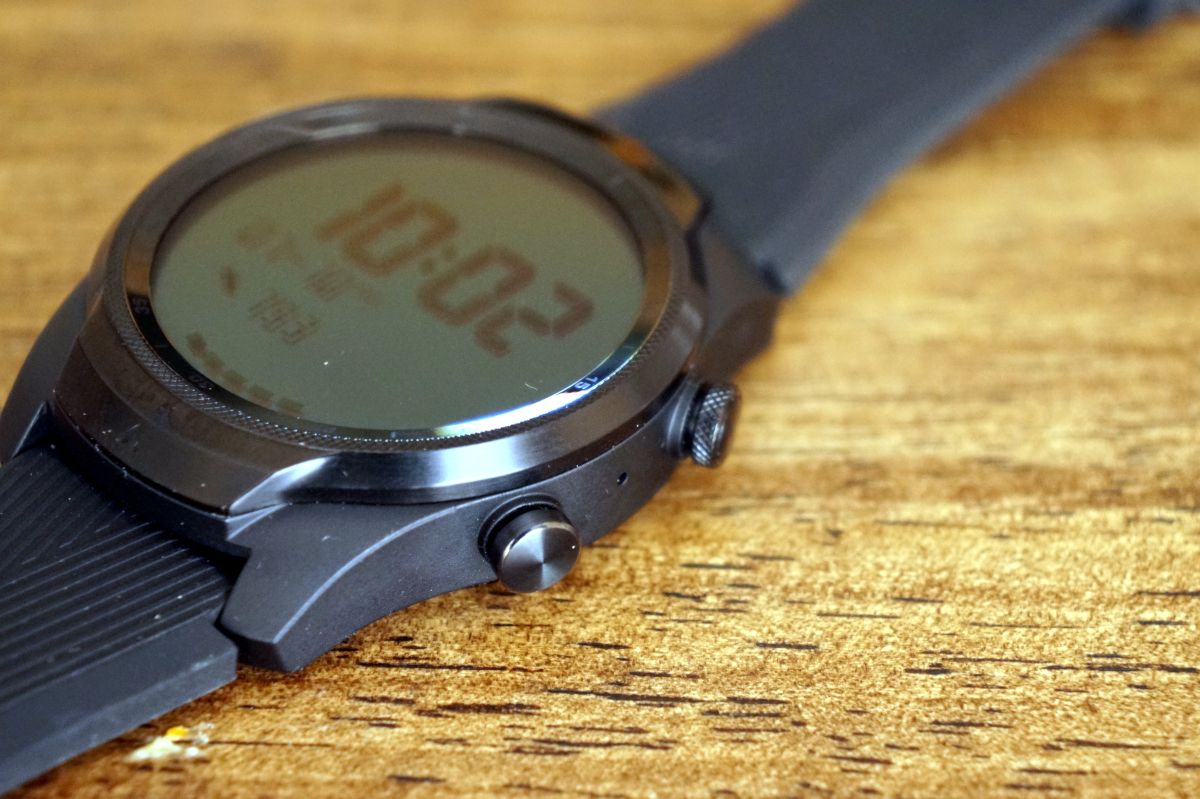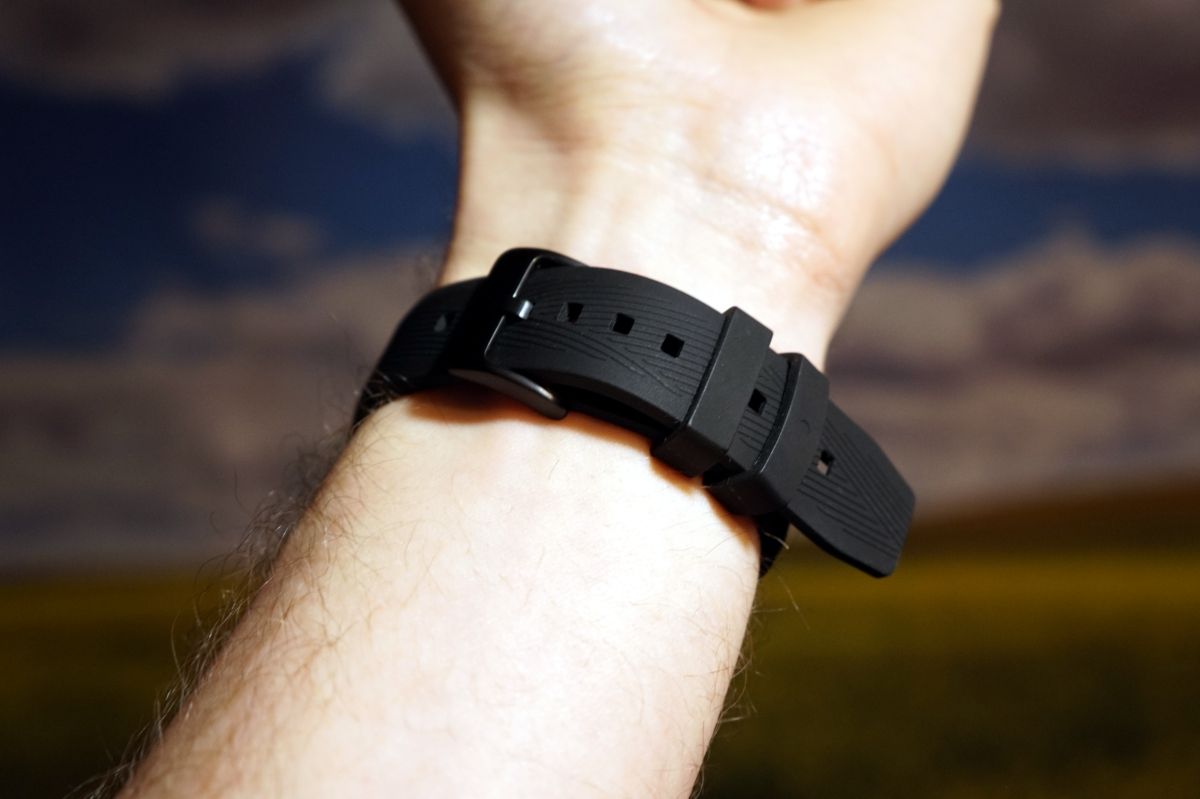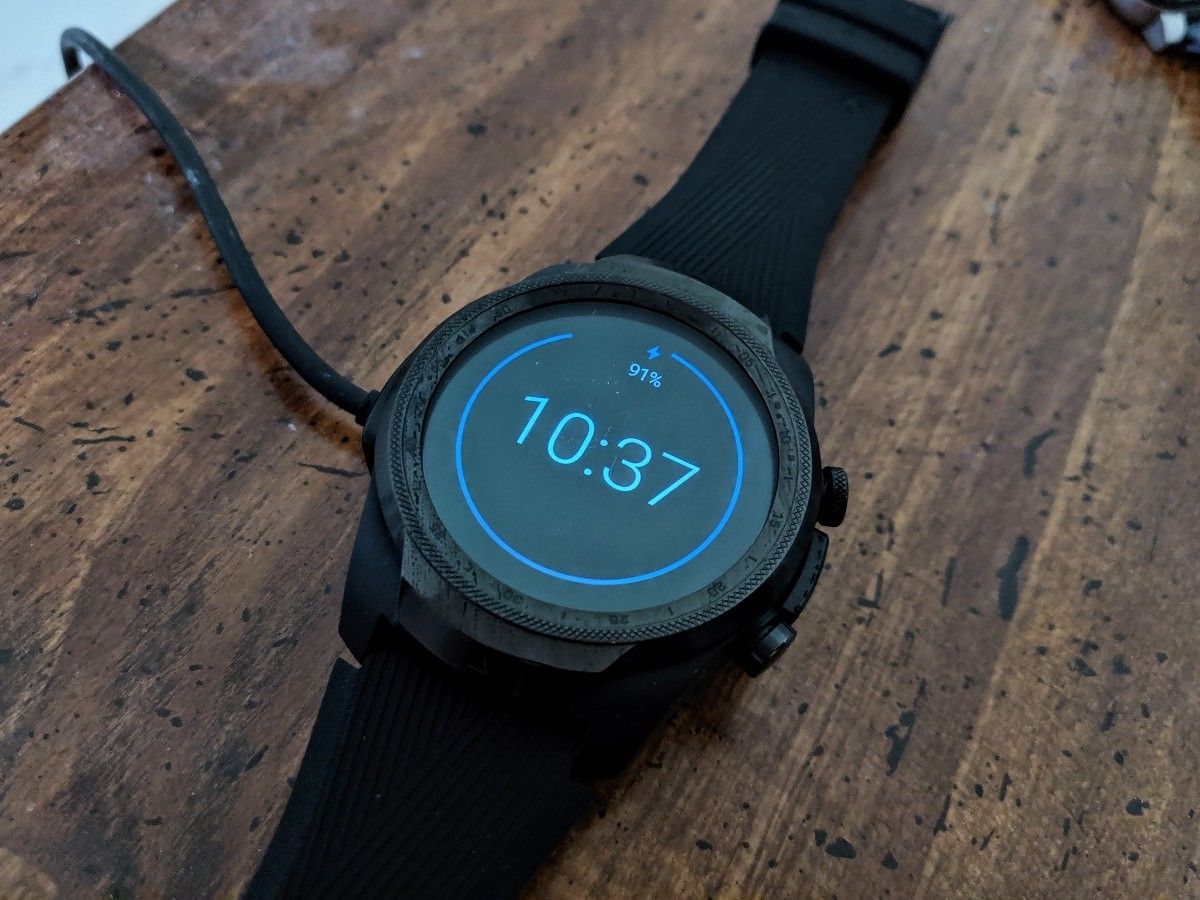
The TicWatch Pro 4G/LTE launched today as an iteration on the original. This is a Wear OS device, but I’m not going to talk about the usual Wear OS tropes just yet. We often hear about how Google doesn’t care about the platform, how there aren’t many intriguing options on the market, how the chipsets are keeping performance down, etc. All of this is, for the most part, could be argued as true. The TicWatch Pro 4G has a lot of the same shortcomings as other Wear OS devices, but does it have enough extras to overcome those issues?
Mobvoi is one of the few companies still pumping out Wear OS devices these days. The TicWatch Pro 4G/LTE is their first smartwatch with cellular connectivity. The hardware is nearly identical to the Bluetooth/Wi-Fi model, but the addition of 4G/LTE allows you to take the watch out without a phone. At least, that’s the idea.
The 4G/LTE connectivity is not available at launch. Verizon customers will be able to connect to the network one month after today. Mobvoi is allowing the press to test out the 4G/LTE connectivity a little earlier than that, but until then this is only a “First Impressions.” I will have a full review later on.
| Specs | TicWatch Pro 4G/LTE |
|---|---|
| Size | 45.15 x 52.8 x 12.6, 47.4g |
| Colors | Black |
| Display Glass | Gorilla Glass 3 |
| Case Materials | Polyamide & glass fiber, stainless steel bezel, aluminum back cover |
| Watchband | Silicone (interchangeable), 22mm |
| OS | Wear OS |
| Phone compatibility | Android, iPhone |
| SoC | Qualcomm Snapdragon Wear 2100 |
| RAM/Storage | 1GB RAM, 4GB storage |
| Network | 4G/LTE FDD |
| Display | 1.39-inch AMOLED (400 x 400 px) + FSTN LCD |
| Connectivity | Bluetooth v4.2 + BLE, WiFi 802.11 b/g/n |
| GPS | GPS + GLONASS + Beidou |
| Sensors | PPG heart rate sensor, accelerometer, gyroscope, e-compass, ambient light sensor, low latency off-body sensor |
| NFC payments | Yes, Google Pay |
| Battery | 415 mAh |
| Military Standard 810G | Withstands temperature shock of between -30 °C and 70 °C; operational between -20 °C and 55 °C; 57kpa pressure; 44 °C solar radiation; 95% humidity; salt fog; sand and dust; shock |
| IP rating | IP68 + pool swimming suitable |
TicWatch Pro 4G/LTE Design
The design of the TicWatch Pro 4G/LTE is identical to the original. Depending on your style preference, that may or may not be a good thing. A lot of people like big, bulky watches with knurling and numbers around the display (even if they don’t serve any purpose on a smartwatch). It’s not my cup of tea, but that doesn’t mean it’s an ugly watch.
There’s no getting around the fact that this is a big watch. Mobvoi did manage to make it 11g lighter than the original, but it’s still a thick watch. I’m used to wearing the Samsung Gear Sport, which is 1mm thinner than the TicWatch Pro 4G. That may not seem like much, but it makes a considerable difference. The Gear Sport is actually 20g heavier, but it feels a lot smaller on my wrist. A lot of that has to do with the bigger case size of the TicWatch Pro 4G.
The two buttons on the right side stick out quite a bit and they make a very satisfying click. The top button serves several purposes. It will take you home (clock face), open the app drawer from the home screen, a long-press opens Google Assistant, and if you continue to long-press you’ll get the power menu. The bottom button is for “functions.” A single press can be programmed to launch an app, a double-press will open Google Pay (or other payment apps), and a long-press will open a shortcut menu for SOS, Essential Mode, Restart, and Power off.
The band that comes with the TicWatch Pro 4G is a pretty standard silicon band. My wrist got sweaty when I was wearing it while being active and, as you can see in photos, it picks up dust and other particulates. Thankfully, the band is quick release so it’s very easy to swap out for a different 22mm band.
TicWatch Pro 4G/LTE Display
The standout feature of the TicWatch Pro 4G/LTE, for me, is the dual-layer display. There are two display technologies being utilized: LCD and AMOLED. The Wear OS interface utilizes the AMOLED display with 400 x 400 resolution. This is referred to as “Smart Mode.” The LCD display shows the time, date, heart rate, steps, and battery. This display is on whenever the AMOLED display is not, and it uses very little battery.
“Essential Mode” is a very handy battery-saving feature that uses only the LCD display. It essentially turns the device into a traditional watch, but it does keep tracking steps and heart rate. You can stretch the battery to last up to 30 days with Essential Mode.
One of the big benefits of the LCD display is outdoor visibility. It’s much, much easier to read the LCD than the AMOLED in direct sunlight. And since it uses so little battery, you don’t have to worry about choosing between seeing the clock at all times or killing your battery. This is a big problem with smartwatches. You want to see the clock at all times, like a traditional watch, but it comes at a sacrifice. The LCD display solves that problem and now I want every smartwatch to have it. In my eyes, this is a genuine game changer for smartwatches.
The AMOLED display is not one of the better ones I’ve seen on a smartwatch. Outdoor visibility is quite poor when you need more than the LCD. But under good lighting conditions, colors look fine and the resolution is what I expect on a smartwatch. Nothing special.
Fitness Features


The TicWatch Pro 4G/LTE puts a lot of fitness features on your wrist. You have two platforms to choose from: Google Fit and Mobvoi’s own TicHealth suite. Mobvoi’s apps include TicHealth, TicPulse, TicExercise, and a shortcut to Pool exercise. Google Fit includes the main Fit app, Fit Breathe, and Fit Workout. Most people will be tempted to just stick with Google’s own apps, but Mobvoi does offer a few features that fitness lovers will enjoy.
Workout detection is something that makes it a ton easier to keep track of all your activities. I often forget to start a workout when I go for a bike ride or a walk. TicExercise can automatically detect a workout and start recording. I had mixed results with this actually working in the real world, especially for bike rides. I will be testing this a lot more in the coming weeks.


The other feature that is useful is the 24/7 passive heart rate recording. This feature doesn’t seem to affect battery life much and it even works in Essential Mode. The data is nicely color-coded and organized on the watch, but unfortunately, it’s not viewable in Mobvoi’s companion app.
Speaking of Mobvoi’s mobile app, it’s not really necessary. Even if you use Mobvoi’s fitness features on the watch, you don’t need the mobile app. All it does is show very basic fitness data in an Apple Watch-like circle chart.
Coming from a Samsung Gear Sport, I found the TicWatch Pro’s fitness features to be a bit lacking. I’m able to track the same things, but it requires more input on my end. The experience is not as hands-off as I’d like. I don’t know if I should blame that on Mobvoi or Google. Fitness is a big part of the TicWatch Pro 4G, especially when the cellular connectivity goes live.
Wear OS


Before I dive too deep into my thoughts on Wear OS, some context on where I’m coming from. I got on board with Android Wear from the beginning with the Moto 360, but then I transitioned to Pebble (RIP) for a long time. Most recently, I’ve been using the Gear Sport. So Wear OS has changed a lot since the last time I used it.
Coming from Tizen (One UI, whatever they call it now), the Wear OS set up process was rough. It took a while to understand that the power button is not a back button. Going back requires a left-to-right swipe. From my previous time with Android Wear, I was expecting all my phone apps with compatible watch functionality to already be there, but I had to install them all individually. Wear OS has evolved to be more of a standalone OS, whereas my Gear Sport acts more like an extension to the phone.
It’s hard to go from an OS you have become very familiar with to a new OS and not have a bias towards the first one. That being said, I do think there are some things that Samsung is doing better than Google. I don’t think a smartwatch OS needs a home button. You’re not typically going that deep into watch apps, so I think just being able to go back with a button serves the same purpose. On a small screen, I prefer using tactile buttons more than gestures.
This is no fault of Google or Mobvoi, but Samsung’s rotating bezel has really spoiled me. Wear OS’ app drawer and Tiles beg to be scrolled through with the bezel wheel. I miss it so much on the TicWatch Pro and it makes me even sadder now that Samsung seems to be ditching it for good.
Speaking of the Tiles, this is a great addition to Wear OS. Samsung has a similar feature called “Widgets” and it’s super handy. I use the Weather Tile a lot and the Timer Tile is also very convenient. A smartwatch UI should be about making interactions as brief as possible. Widgets/Tiles allow you to glance at info quickly without opening a specific app.
The worst thing about Wear OS has been well-documented: performance. One of the things that made the initial set up process so frustrating was the lagginess. Animations were janky, the touchscreen was unresponsive at times, and it just felt like I was fighting the watch. Once I got past that initial set up, performance evened out and it seems fine now. Still, at best, Wear OS on the Wear 2100 is nowhere near as buttery smooth as a Samsung watch.
The one legitimate bug I’ve experienced with the watch involves Google Pay. I can use Google Pay on my phone with no issues, but I can’t set it up on the watch. I start setup on the watch, then it opens up on my phone so I can confirm my card, and when I submit to complete the setup I get an error saying “Couldn’t finish setup to pay in stores.” It says my phone can’t be used because it is “rooted or altered in some other way.” My phone is not rooted and, as mentioned, it does work with Google Pay. I’m not sure what’s going on here.
TicWatch Pro 4G/LTE Performance
As mentioned briefly in the previous section, performance is a known issue of Wear OS and it’s certainly something I’ve noticed on the TicWatch Pro 4G/LTE. The watch chugged through the initial setup process and it has been mostly okay since then. One thing to note about the 4G/LTE model is it has 1GB of RAM, which is more than the original TicWatch Pro. Having never used the original, I can’t know if it makes a considerable difference in performance. Regardless, this watch is clearly not on the same level as my Gear Sport, which is going on 2-years old. For most people, the performance is probably fine, but Google’s smartwatch platform is in desperate need of a better chipset.
Battery life has been decently good. I can get about 2-days on a charge, but I’ll be very close to Essential Mode kicking on toward the end of the second day. That’s with the 24/7 heart rate monitoring enabled and tracking workouts. In my experience with smartwatches, 2-3 days of battery life is pretty good. You can stretch it further if you disable some of the background features like 24/7 heart rate, NFC, Wi-Fi, etc. Essential Mode is great for when you want to squeeze some extra juice and still have a functional watch on your wrist.
The charging dock that comes with the TicWatch Pro 4G/LTE is flat and magnetic. The dock requires a standard USB wall adapter and since it doesn’t have wireless charging you’ll need to bring it with you. The watch charges from 0-100% in about two hours. I found the dock to be a little cumbersome to use. It doesn’t want to lay flat when the watch isn’t docked. I would like to see something heavier.
Performance is something that I will be keeping a close eye on over the next few weeks.
Initial Thoughts
After using the TicWatch Pro 4G/LTE for about 5 days, my first impressions are mostly positive. I have some definite issues with Wear OS and I’m not sold on Mobvoi’s fitness features yet. However, a lot of my critiques boil down to “this isn’t the watch I’m used to” and that’s not entirely fair. I will continue to use the watch as my daily driver for the next few weeks and get further acquainted with it.
In general, I think this is a nice Wear OS watch. It doesn’t feel cheap, which is good, because it’s not. The dual-layer display is a genuinely great feature. I wish the watch was smaller and sleeker, but that’s just my personal style preference.
I’m very interested to see how the cellular connectivity affects my experience. Ever since the first smartwatches with cellular connectivity arrived on the market I’ve been skeptical of the benefits. I can’t see myself leaving the house without my phone, and paying for data on another device doesn’t sound appealing. We’ll see if my opinion changes when I get to try it out.
As of now, the TicWatch Pro 4G/LTE offers a premium package for Wear OS. If you’re looking for a Wear OS device right now, I think the dual-layer display is a big enough game changer to warrant a look at the TicWatch Pro 4G/LTE.
The post TicWatch Pro 4G/LTE First Impressions: Two displays are twice as nice appeared first on xda-developers.











0 comments:
Post a Comment